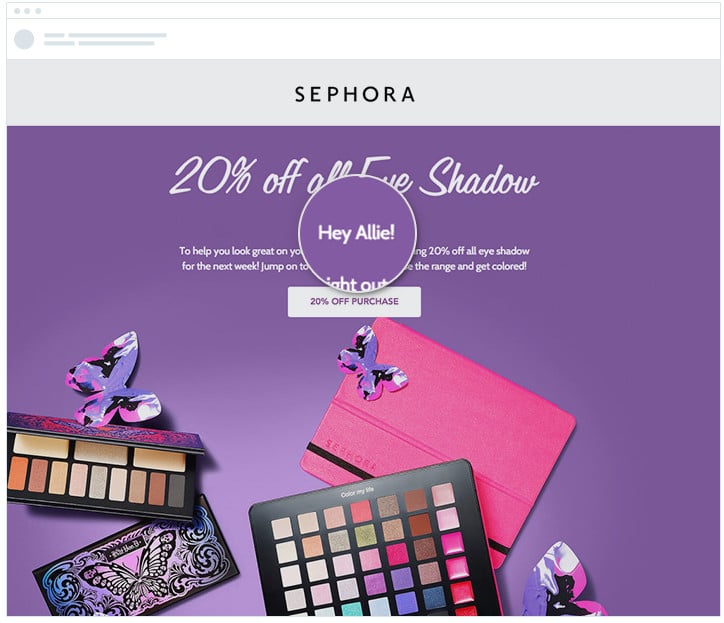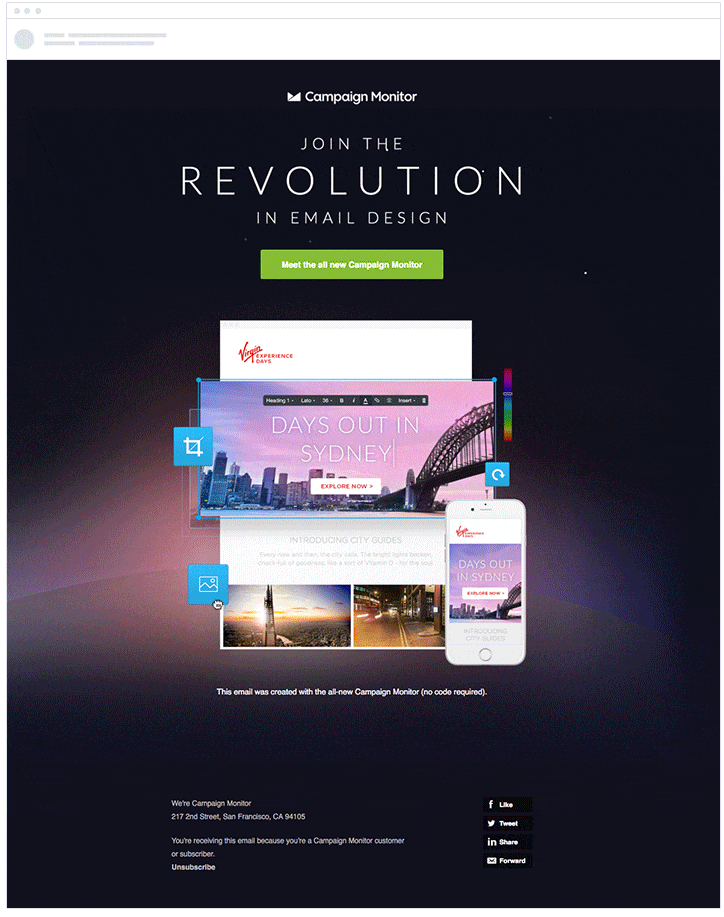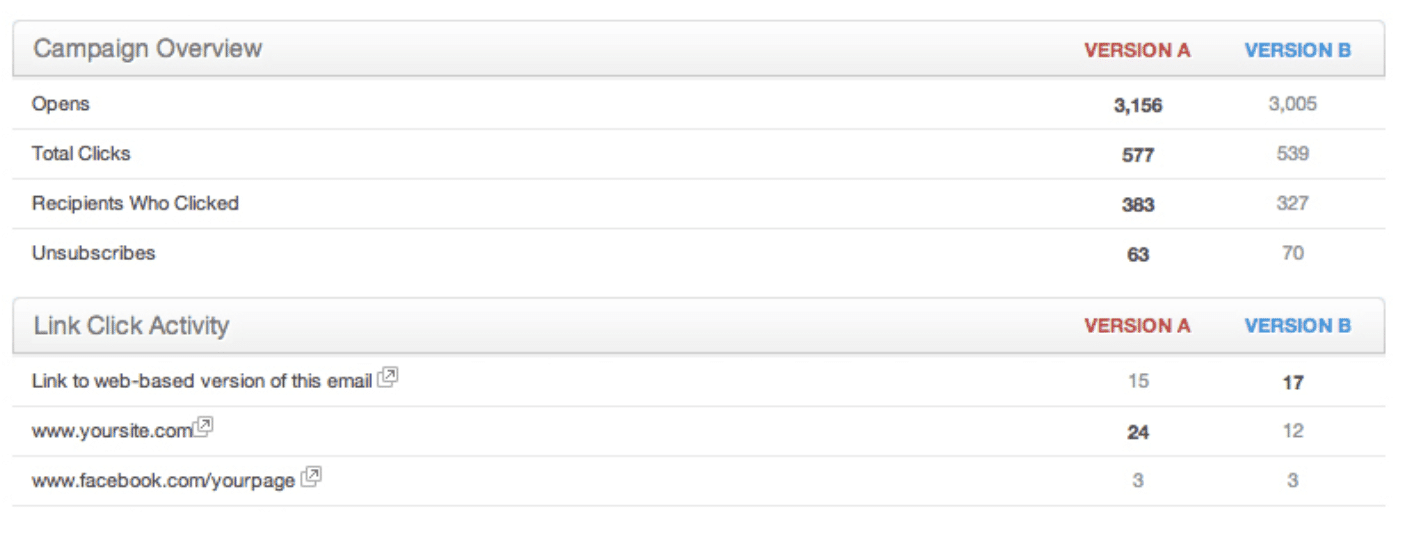When it comes to figuring out what resonates with your subscribers, it’s not enough to trust your intuition. Yes, you need to write compelling copy and deliver a relevant message. However, it’s essential that you A/B test your emails, as well.
A/B testing your email content is a way of figuring out what’s most effective for encouraging opens and clicks. It’s also a great way to find out what your audience prefers so you can improve your personalization tactics.
This article will help you learn what can be A/B tested in an email, what metrics you should measure to determine a winner, and how you can combine basic personalization with your findings from A/B testing. In other words, at the end of this article, you’ll be A/B testing like a boss.
What can you A/B test?
The sky’s the limit when it comes to A/B testing, but here are some of the most common things to test within your email marketing campaigns. Remember you’re looking to see which emails produce more results in terms of your most important metrics.
Subject line
Email marketers looking to improve open rates will A/B test subject lines. To do this, make sure every bit of the email is the same, except the subject line. You can test different subject line lengths, different power words in subject lines, and generic vs. specific subject lines.
To test out how well your subscribers respond to personalization, test an identical subject line that includes the subscriber’s first name and one that doesn’t include a first name. Campaign Monitor did this test and found that personalized subject lines experienced a 26% increase in open rates.
From name
It’s easy to overlook the “from name” in an email, but email marketing experts purport that customizing the sender’s name can actually impact open rates.
When testing from names, you can determine whether or not people respond to your brand name vs. a well-known person at your brand. For example, Apple might test if subscribers are more likely to open an email from “Tim Cook” or “Apple.”
You may also test something that indicates exclusivity vs. brand name. For example, you could test something like “Ulta Team” or “Ulta VIP Rewards Team” to see what makes a bigger splash.
There are several other ideas including making your sender name more friendly (e.g. Your Friends at Buzzfeed), combining corporate names and personal names (Tim Cook from Apple), or testing the power of consistency in using the same recognizable name every time vs. using different names.
Content and copy
Testing content is where A/B testing gets really fun for email marketers. You may look at your customer data to glean insights about customer preferences. However, this may spark several different ideas when it comes to how you should execute the design, content, calls-to-action, etc. in your future emails.
You can see what content produces more results by keeping everything in your email the same except for the content piece you are testing.
A cool way to test how subscribers respond to personalization could be to A/B test an image with a subscriber name included and an image without the subscriber name. Here is a cool example from Sephora of using a subscriber name in an image, for your reference.

Dynamic content
Another helpful way to see how well subscribers respond to your content is to A/B test with dynamic content. As a quick review, dynamic content is the ability to switch out a piece of content (visual, text, video, etc.) for different list segments or customer profiles that are more relevant to that particular subscriber group.
Campaign Monitor ran a test where we switched out offer images for subscribers based on their location. We showed a different corresponding image for customers in New York, customers in Sydney, and customers in London.

The result?
A 29% increase in click-through rates.
A/B testing dynamic content is a stellar way to determine how different customers respond to different messages.
As mentioned earlier, there are several other things you can A/B test including content offers, copy, email length, your call to action, product recommendations, and more.
Metrics to measure with A/B Testing
Now that you know what you can A/B test to get better results, it’s important to understand how you even measure success. For this, it’s important to be familiar with top A/B testing metrics that show success.
When it comes to email marketing, there are 5 metrics that you should always pay attention to when A/B testing. They are as follows:
- Opens – This number shows you how many of your recipients saw your email and opened it.
- Total Clicks – This number tells you how many total clicks your campaign received.
- Recipients Who Clicked – This number tells you how many clicks you got from email recipients.
- Unsubscribers – This tells you how many people unsubscribed after receiving your email.
- Link Click Activity – This metric tells you where the majority of your links for this particular campaign came from.
With the help of Campaign Monitor, you can easily see these metrics while your test is in progress.

With the simple click of a button, you can see how well Version A and Version B of your email are performing in comparison to each other. This will give you a good idea of what personalization, design, content, copy, and other decisions you need to make in future email campaigns to better reach your subscribers.
How to use your A/B testing results to better personalize your campaigns
Once your A/B test is complete, you want to put what you learned into practice. In other words, you want to use that data to better personalize your messages. This will help you create more relevant experiences for your subscribers and positively affect your email marketing ROI.
When it comes to personalizing your messages, you may need to delve a little deeper with your A/B testing. For example, chances are you have different email list segments that represent different subscriber groups.
The type of subject lines, messages, images, offers, recommendations, etc. that resonate with one group better may resonate completely differently with a different segmented list.
If you are truly looking to personalize your messages, it’s important to A/B test within different lists. For example, you may segment your lists based on gender. The type of content and offers that your female subscribers like may differ greatly than the type of content your male subscribers like.
To better understand your different subscriber groups, you can A/B test the same emails for one segment (males) and for another segment (females).
If the results differ, you know you need to create different and personalized messages for both groups.
Wrap up
A/B testing is a part of marketing that you should never overlook. It holds the power to help you provide a better customer experience, provide more relevant experiences to different subscriber groups and helps you find unique ways to generate a more positive ROI.
When you know what to A/B test, the metrics you should be measuring, and how you can use A/B testing and personalization hand-in-hand, you’re armed with the tools to improve your email marketing campaigns.





